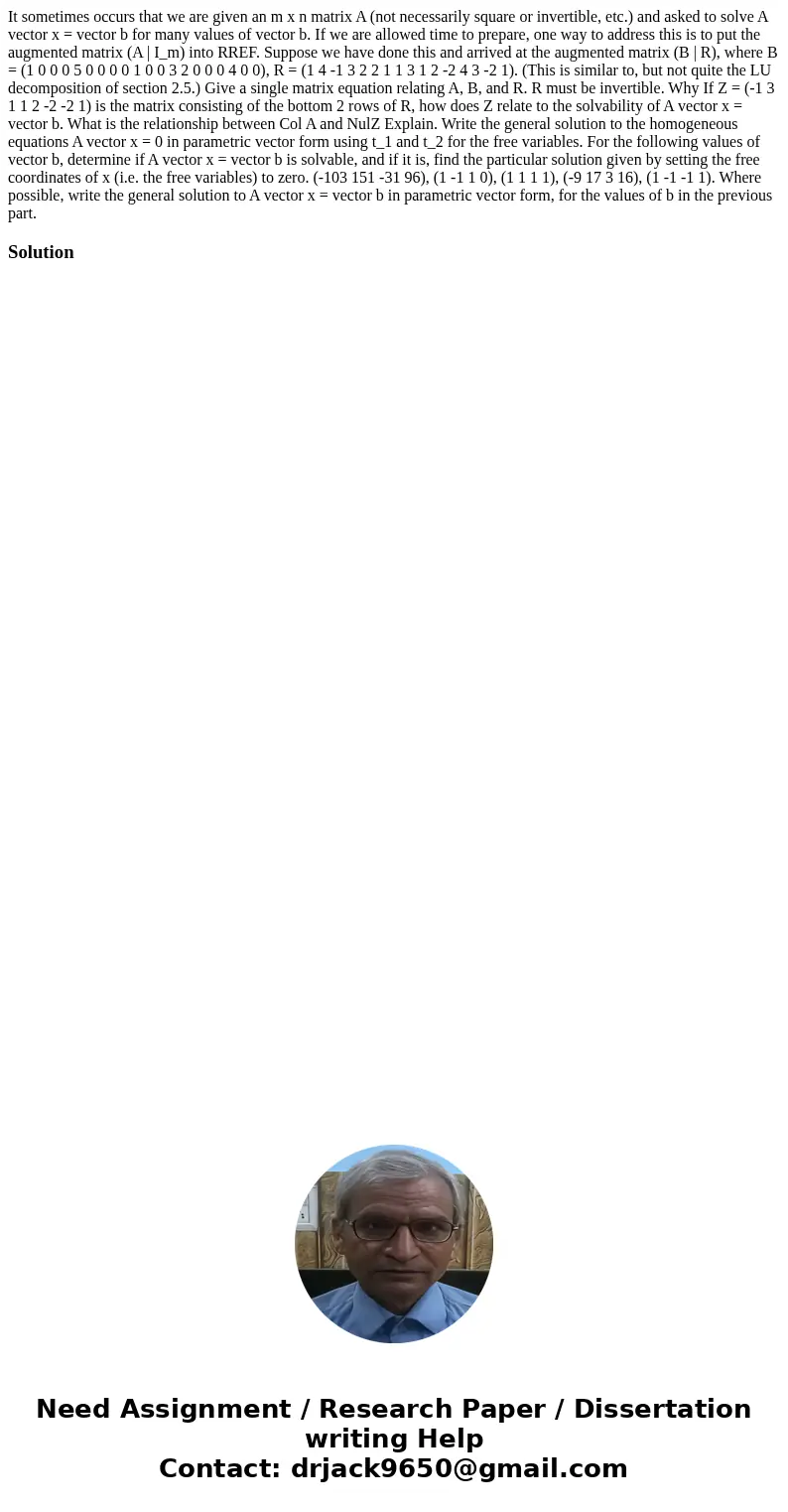It sometimes occurs that we are given an m x n matrix A not
It sometimes occurs that we are given an m x n matrix A (not necessarily square or invertible, etc.) and asked to solve A vector x = vector b for many values of vector b. If we are allowed time to prepare, one way to address this is to put the augmented matrix (A | I_m) into RREF. Suppose we have done this and arrived at the augmented matrix (B | R), where B = (1 0 0 0 5 0 0 0 0 1 0 0 3 2 0 0 0 4 0 0), R = (1 4 -1 3 2 2 1 1 3 1 2 -2 4 3 -2 1). (This is similar to, but not quite the LU decomposition of section 2.5.) Give a single matrix equation relating A, B, and R. R must be invertible. Why If Z = (-1 3 1 1 2 -2 -2 1) is the matrix consisting of the bottom 2 rows of R, how does Z relate to the solvability of A vector x = vector b. What is the relationship between Col A and NulZ Explain. Write the general solution to the homogeneous equations A vector x = 0 in parametric vector form using t_1 and t_2 for the free variables. For the following values of vector b, determine if A vector x = vector b is solvable, and if it is, find the particular solution given by setting the free coordinates of x (i.e. the free variables) to zero. (-103 151 -31 96), (1 -1 1 0), (1 1 1 1), (-9 17 3 16), (1 -1 -1 1). Where possible, write the general solution to A vector x = vector b in parametric vector form, for the values of b in the previous part.
Solution

 Homework Sourse
Homework Sourse